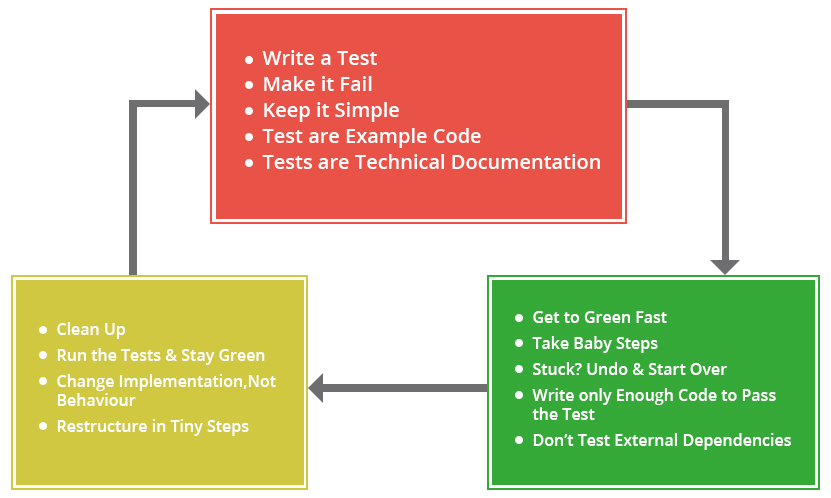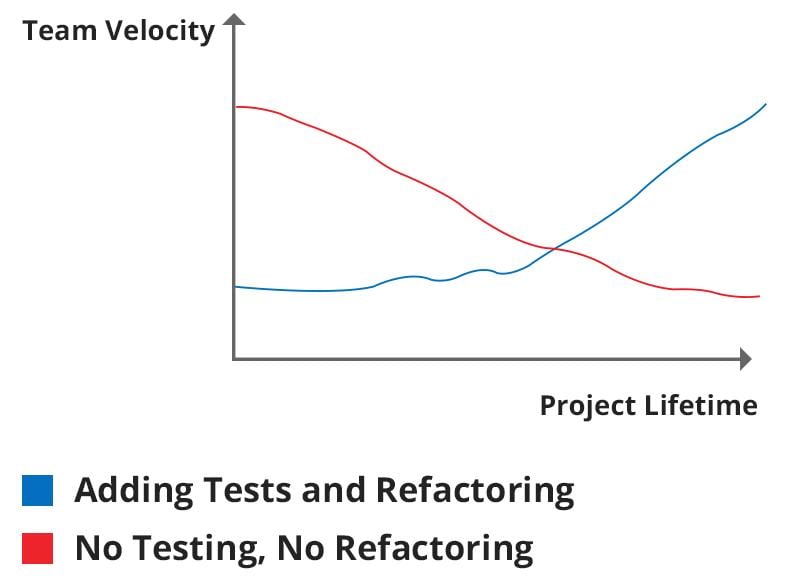Overview of Test Driven Development
Software testing plays an important role in the life cycle of software development. It is imperative to identify bugs and errors during software development and increase the quality of the product.Therefore, one must focus on software testing. There are many approaches and Test and Behavior Driven Development approach is one of them. TDD is the key practice for extreme programming; it suggests that the code is developed or changed exclusively on the basis of the unit test results.
Test Driven Development with Legacy Code
In simple words, a code without testing is known as legacy code. A big disadvantage of legacy code is that it’s not easily understandable (for both developments as well as the business team) and that is the only reason why it is difficult to change the code for new features. You can also learn more more about Test Driven Development for Big Data. Therefore, a code without tests is bad code. It is necessary to write code with tests for best productivity and easy modifications.Why Test Driven Development-TDD?
3 Benefits of Test Driven Development
- It gives a way to think through our requirements or design before we write our functional code.
- It is a programming technique that enables us to take small steps during building software.
- It is more productive as compared to attempting to code in large steps.
What is Test Driven Development?
The most efficient and attractive way to proceed in smaller steps.
- Fewer Bugs
- Higher quality software
- Focus on single functionality at a given point in time
Importance of Test Driven Development (TDD)
- Requirements - Drive out requirement issues early(more focus on requirements in depth).
- Rapid Feedback - Many small changes vs One big change
- Values Refactoring - Refactor often to lower impact and risk.
- Design to Test - Testing driving is a good design practice.
- Tests as information - Documenting decisions and assumptions.

You May also Love to Read Test Driven & Behavior Driven Development in Scala
Acceptance Test Driven Development (ATDD) Overview
ATDD stands for Acceptance Test Driven Development. This technique is done before starting the development and includes customers, testers and developers into the loop. These all together decided acceptance criteria and work accordingly to meet the requirements. ATDD helps to ensure that all project members understand what needs to be done and implemented. The failing tests provide us quick feedback that the requirement is not being met. It is a collaborative practice where users, testers, and developers define automated acceptance criteria. ATDD helps to ensure that all project members understand precisely what needs to be done and implemented. Failing tests provide quick feedback that the requirements are not being met. The tests are specified in business domain terms. Each feature must deliver real and measurable business value: indeed, if your feature doesn’t trace back to at least one business goal, then you should be wondering why you are implementing it in the first place.Why Acceptance Test Driven Development (ATDD)?
ATDD usually involves establishing the criteria first most often from a user perspective, and, acceptance tests are developed and run to see the results of failure with the right code based on examples. Customer need technical help. Developer and Tester to provide technical support. Pairwise authoring. Developers need business knowledge. Customer can provide business rules. Pairwise implementation.3 Benefits of Acceptance Test Driven Development
- ATDD closes the loop between product and dev teams
- ATDD increases efficiency in the development process
- ATDD promotes a shared understanding of “complete.”
Importance of Acceptance Test Driven Development
If you use SCRUM and user stories to deliver your projects, chances are each of your user stories has many Acceptance Criteria associated with them. And, you’ll notice that each lowest level Acceptance Criterion represents a unit of a functional component that needs to be delivered before the user story can be marked ‘done’.- Developers write code with ‘Testing’ in mind
- Receive quick feedback on code quality
- Outlines the specific feature
- Clear details to let the developers /testers know when they are ‘Done’
- Fosters communication between the engineering and business customers
- Understand and Write User stories
- Convert Acceptance criteria into executable Acceptance test cases
- Write code to match the Acceptance test cases
Benefits of Acceptance Test Driven Development (ATDD)
- As we have ATDD very first, so it helps to reduce defect and bug fixing effort as the project progresses.
- ATDD only focus on ‘What’ and not ‘How’. So, this makes it very easier to meet customer’s requirements.
- ATDD makes developers, testers, and customers to work together, this helps to understand what is required from the system.
Behaviour Driven Development (BDD) Overview
Behaviour Driven Development is similar to Test Driven Development. In other words, Behaviour Driven Development is the extended version of Test Driven Development. The process is similar to TDD. In this also, the code is first written in BDD and then production code. But, the main difference is that in BDD the test is written in plain descriptive English type grammar as opposed to TDD. This type of development:-- Explains the behavior of the software/program.
- User-friendly
Features of Behavior Driven Development
- The major change is in the thought process which is to be shifted from analyzing in tests to analyzing in behavior.
- Ubiquitous language is used, hence it is easy to be explained.
- BDD approach is driven by business value.
- It can be seen as an extension to TDD, it uses natural language which is easy to understand by non-technical stakeholders also.
Behavior Driven Development (BDD) Approach
We believe that the role of testing and test automation TDD (Test Driven Development) is essential to the success of any BDD initiative. Testers have to write tests that validate the behavior of the product or system being generated. The test results formed are more readable by the non-technical user as well. For Behavior Driven Development to be successful, it becomes crucial to classify and verify only those behaviors that give directly to business outcomes. Developer in the BDD environment has to identify what program to test and what not to test and to understand why the test failed. Much like Test Driven Development, BDD also recommends that tests should be written first and should describe the functionalities of the product that can be suited to the requirements.
Behavior Driven Development helps greatly when building detailed automated unit tests because it focuses on testing behavior instead of testing implementation. The developer thus has to focus on writing test cases keeping the synopsis rather than code implementation in mind. By doing this, even when the requirements change, the developer does not have to change the test, input, and output to support it. That makes unit testing automation much faster and more reliable. Though BDD has its own sets of advantages, it can sometimes fall prey to reductions. Development teams and Tester, therefore, need to accept that while failing a test is a guarantee that the product is not ready to be delivered to the client, passing a test also does not mean that the product is ready for launch. It will be closed when development, testing, and business teams will give updates and progress report on time. Since the testing efforts are moved more towards automation and cover all business features and use cases, this framework ensures a high defect detection rate due to higher test coverage, faster changes, and timely releases.
Features of Behavior Driven Development (BDD)
It is highly suggested for teams and developers to adopt BDD because of several reasons, some of them are listed below:- BDD provides a very accurate guidance on how to be organizing communication between all the stakeholders of a project, may it be technical or non-technical.
- BDD enables early testing in the development process, early testing means lesser bugs later.
- By using a language that is understood by all, rather than a programming language, a better visibility of the project is achieved.
- The developers feel more confident about their code and that it won’t break which ensures better predictability.
.webp?width=1921&height=622&name=usecase-banner%20(1).webp)


